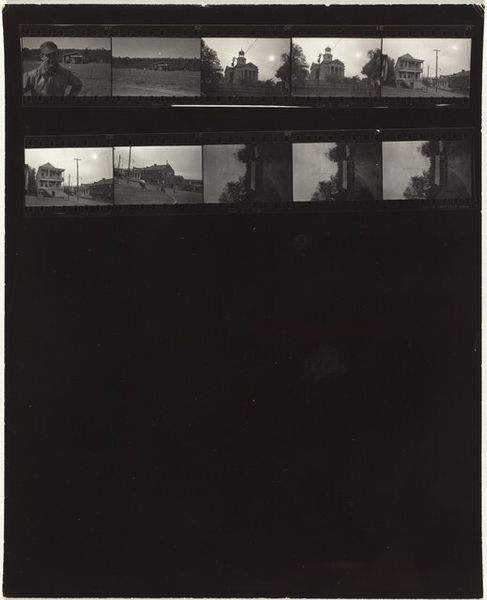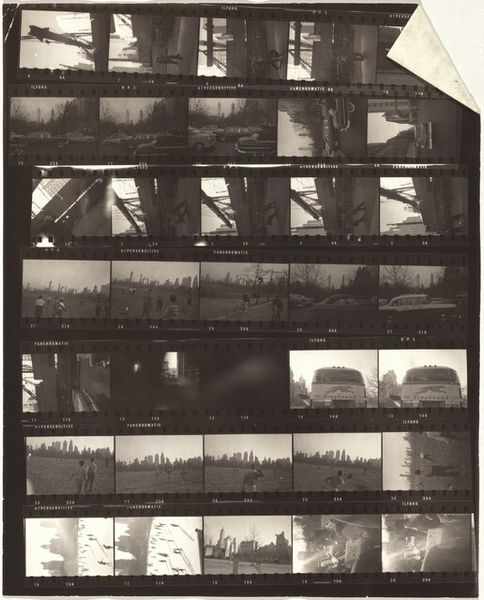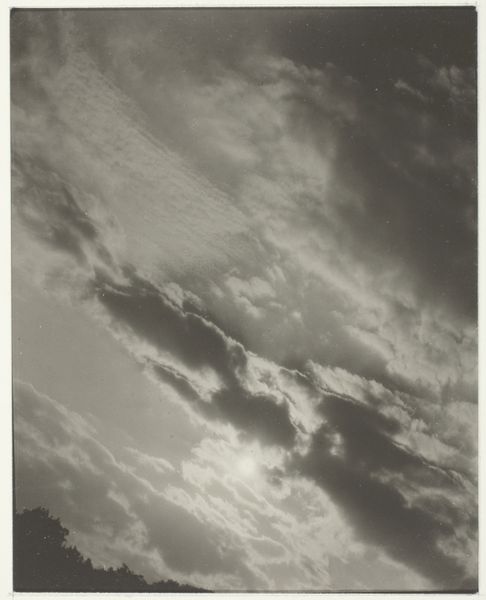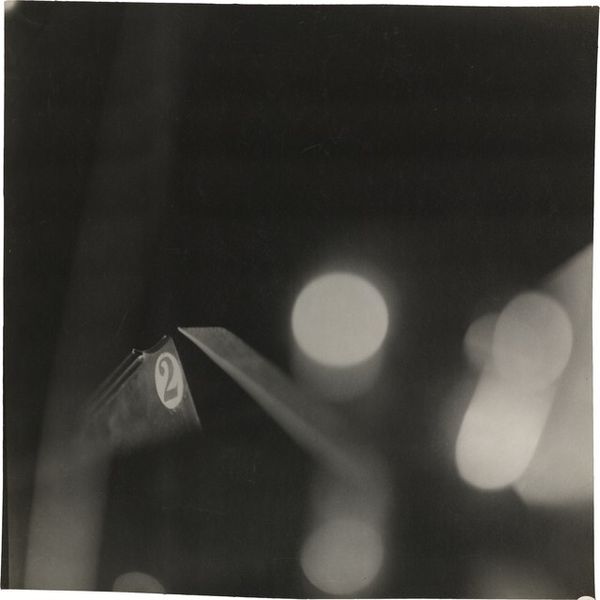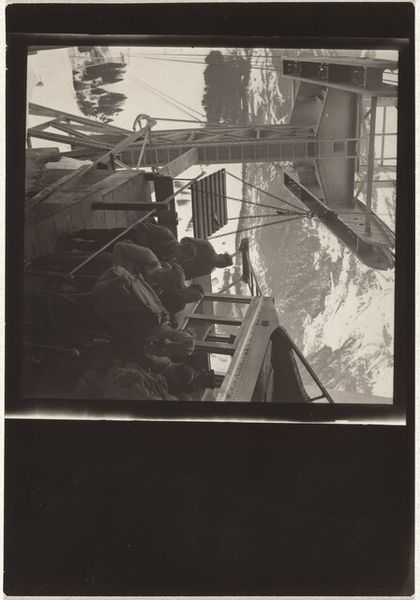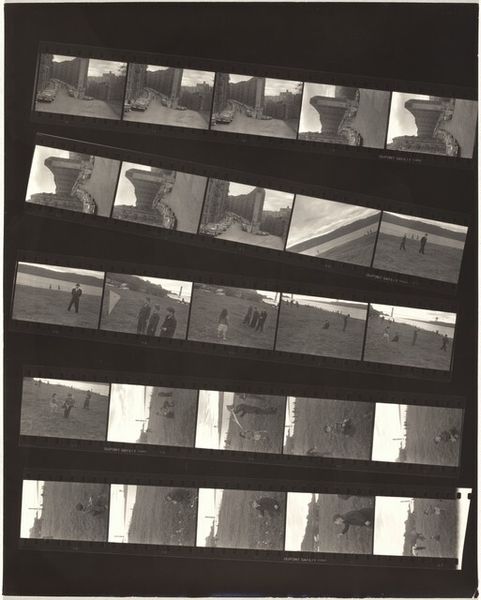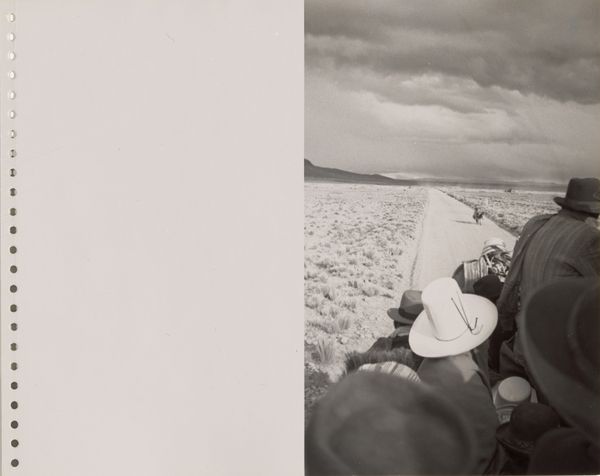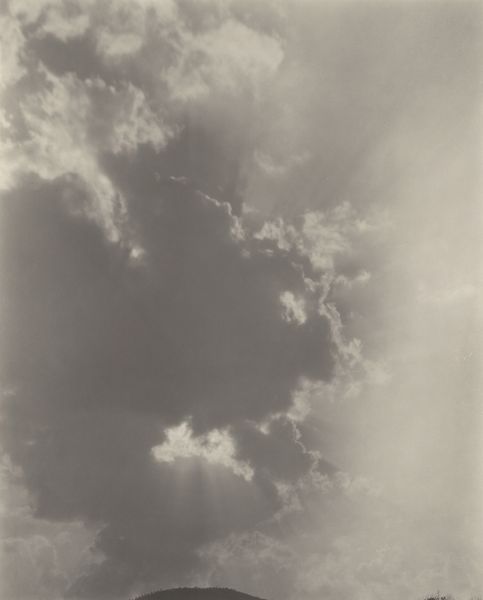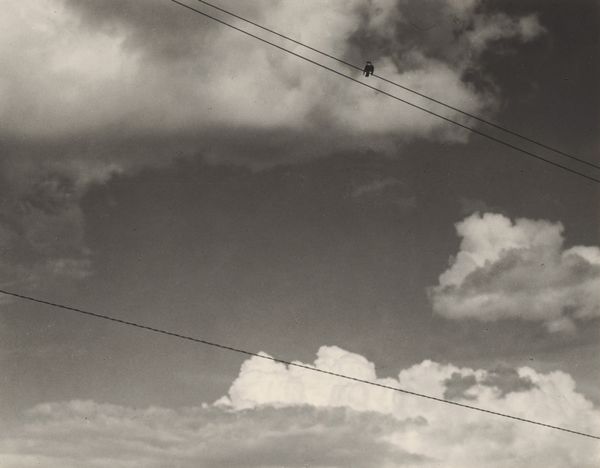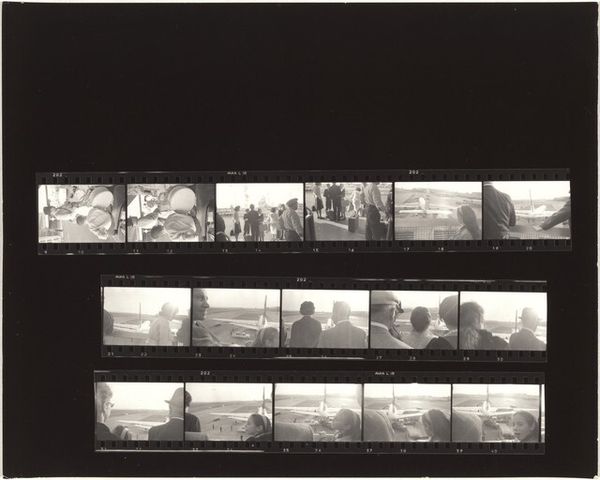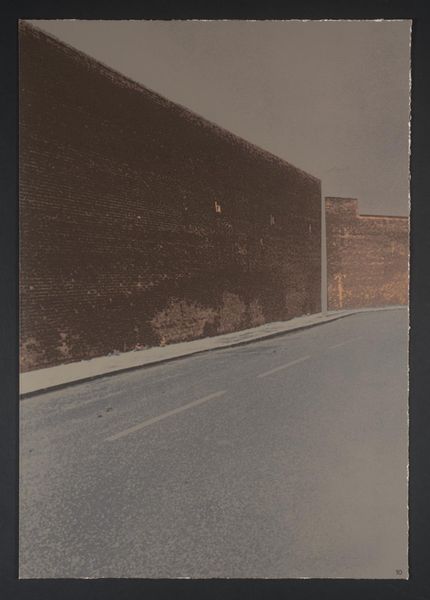
print, photography, gelatin-silver-print
# print
#
landscape
#
street-photography
#
photography
#
gelatin-silver-print
#
monochrome photography
#
outdoor activity
#
modernism
#
realism
Dimensions: image: 5.9 x 5.6 cm (2 5/16 x 2 3/16 in.) sheet: 9 x 6.2 cm (3 9/16 x 2 7/16 in.)
Copyright: National Gallery of Art: CC0 1.0
Editor: Here we have Robert Frank's gelatin silver print, simply titled "Bridge," dating from around 1941 to 1945. There's this wonderful sense of atmosphere despite the stark monochrome, and it appears to be printed from a negative that hasn’t been handled too delicately – there's marks and even tape. What do you make of it? Curator: Immediately, I'm drawn to the material reality of this object. It isn’t just an image, but a physical print. These imperfections, those marks and the tape you mentioned – they are part of the history of its making and its consumption. This was not necessarily a pristine ‘fine art’ object but more of an artifact. Editor: So you're suggesting that its value comes, at least in part, from it being this almost ‘working document’ as opposed to just an attempt at an aesthetic picture? Curator: Exactly. And think about gelatin silver prints. That technology itself involved a complex interplay of industrial processes, labor, and material extraction. Frank used these means – which in and of themselves carried certain cultural meanings - to render visible what, for him, must have held social importance. What aspects of labour, or even leisure do you notice depicted? Editor: Well, it seems people were moving across the bridge in their leisure time, while somebody must have gone through great labour to set the light poles up, to transport them there, to arrange for there to be made. It seems like this gelatin print highlights all aspects of how this bridge was formed, what material had to be pulled from nature for it to become what it is, and all kinds of class systems! Curator: Precisely! The print allows Frank's capture and the modern eye’s view a connection with multiple types of labour. What about the atmospheric perspective makes you ask about all kinds of class systems? Editor: What the process of production tells me, as well as seeing how people are arranged around nature that someone manufactured from nature in a specific class. Now I will never think of just an aesthetic bridge view the same! Curator: Indeed. The materials and processes speak volumes.
Comments
No comments
Be the first to comment and join the conversation on the ultimate creative platform.
